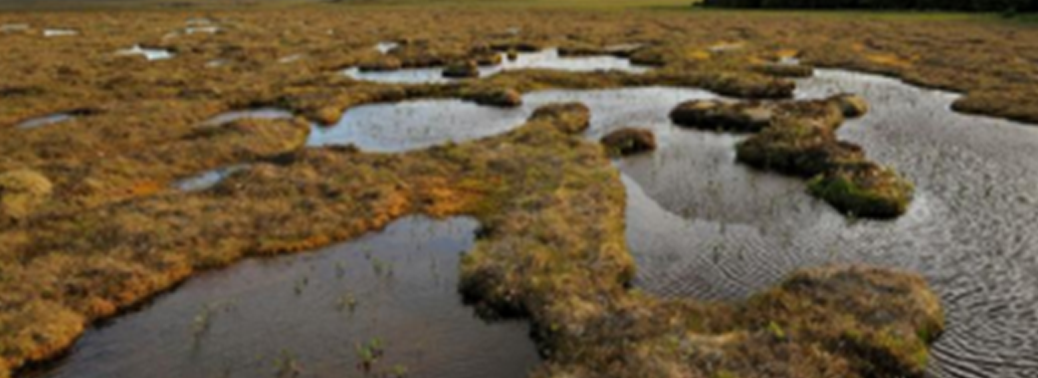PROTECTING PEATLANDS CAN HELP ATTAIN CLIMATE GOALS
28, Mar 2020

Prelims level : Environment - Ecology Eco System
Mains level : Conservation, Environmental Pollution and Degradation, Environmental Impact Assessment.
Why in News?
- Peatlands, which play a crucial role in regulating global climate by acting as carbon sinks, are facing degradation and need to be urgently monitored, according to a Food and Agriculture Organization (FAO) of the United Nations report released recently.
Highlights:
- Peatlands cover only three per cent of Earth’s surface. However, their degradation due to drainage, fire, agricultural use and forestry can trigger release of the stored carbon in a few decades.
- The report highlights important case studies from Indonesia, the Democratic Republic of the Congo and Peru in their attempts to map and monitor peatlands. Peatlands contain 30 per cent of the world’s soil carbon.
- When drained, these emit greenhouse gases, contributing up to one gigaton of emissions per year through oxidation, according to the report.
Mapping Peatlands:
- Peatlands are formed due to the accumulation of partially decomposed plant remains over thousands of years under conditions of water-logging.
- To prevent their further degradation, these areas should be urgently mapped and monitored.
- Peatland mapping tells us where the peat is and what condition it is in.
- Together, with conservation and restoration measures, mapping also helps in maintaining
- water regulation services (reduction of flood intensities) and biodiversity.
- For countries keen on reducing emissions, monitoring the ground water level of peatlands is vital, or else they can turn into carbon emission sources.
- Mapping methodologies include both ground and remotely-sensed input data.
- The monitoring exercise of Peatlands requires a mix of satellite and ground-based Exercises.
Degraded Peatlands:

- Badly degraded peatlands that have been drained for a longer period of time, potentially burned and intensely managed can become hydrophobic.
- In this case, their re-wetting would not occur via natural means.
- Though peatlands in North America and the Russian Federation are still intact, about 25 per cent have degraded in Europe, Central and Southeast Asia, East Africa, southern America and the Amazon.
Restoration Measures:
- Indonesia, which has 40 per cent of all tropical peatlands, has taken corrective measures to alter drainage and deforestation since the 1980s.
- Their government created the Peat Ecosystem Restoration Information System (PRIMS), an online platform that provides information on the condition of peatlands and restoration efforts undertaken.
- Restoration work of highland peatlands was also conducted in the Hindukush Himalayan (HKH) region.
- This was done to ensure water security for cities in their watersheds.
- According to an ICIMOD report, the total peat area, excluding China, in the HKH region was 17,106 square kilometres in 2008. The degrading peat area was 8,236 square kilometres.
- In India, peatlands occupy roughly 320–1,000 Square Kilometres Area.
Other Benefits:
- Peatlands occur in different climate zones. While in tropical climate, they can occur inmangroves, in Arctic regions, peatlands are dominated by mosses. Some mangrove species are known to develop peatland soils under them.
- Besides climate mitigation, peatlands are important for archaeology, as they maintain pollen, seeds and human remains for a long time in their acidic and water-logged conditions.
- The vegetation growing on pristine peatlands provide different kinds of fibres for construction activities and handicrafts.
- Peatlands also provide fishing and hunting opportunities. It is also possible to practise paludiculture or wet agriculture on rewetted peatlands.
- According to the Greifswald Mire Centre Strategy 2018-2022, rewetting of peatlands reduces emissions and can play an important role in achieving the objective of the United Nations Framework Convention on Climate Change






